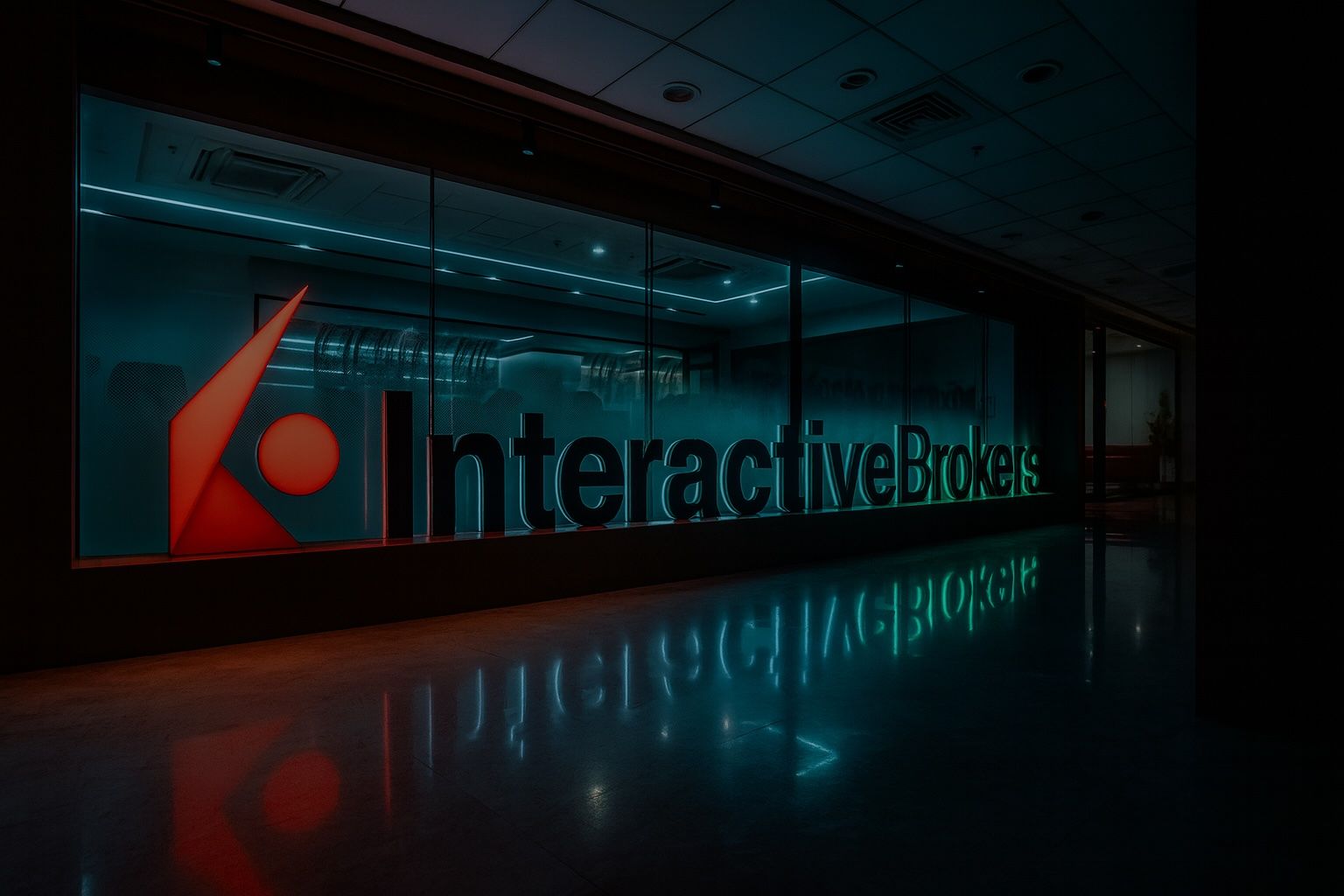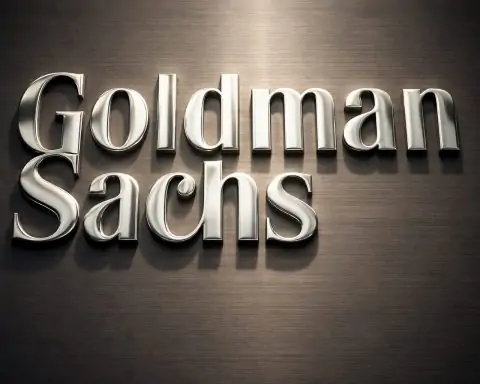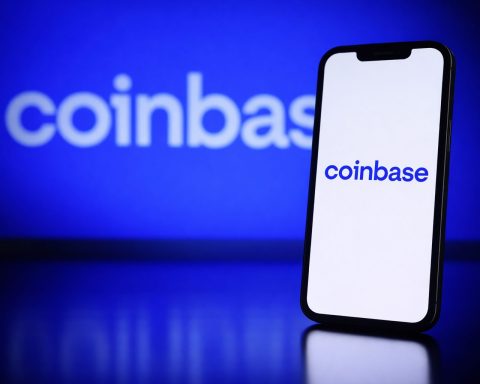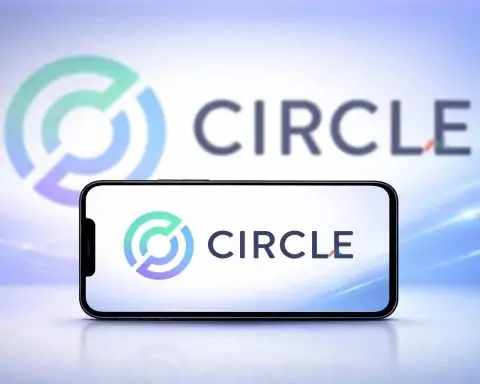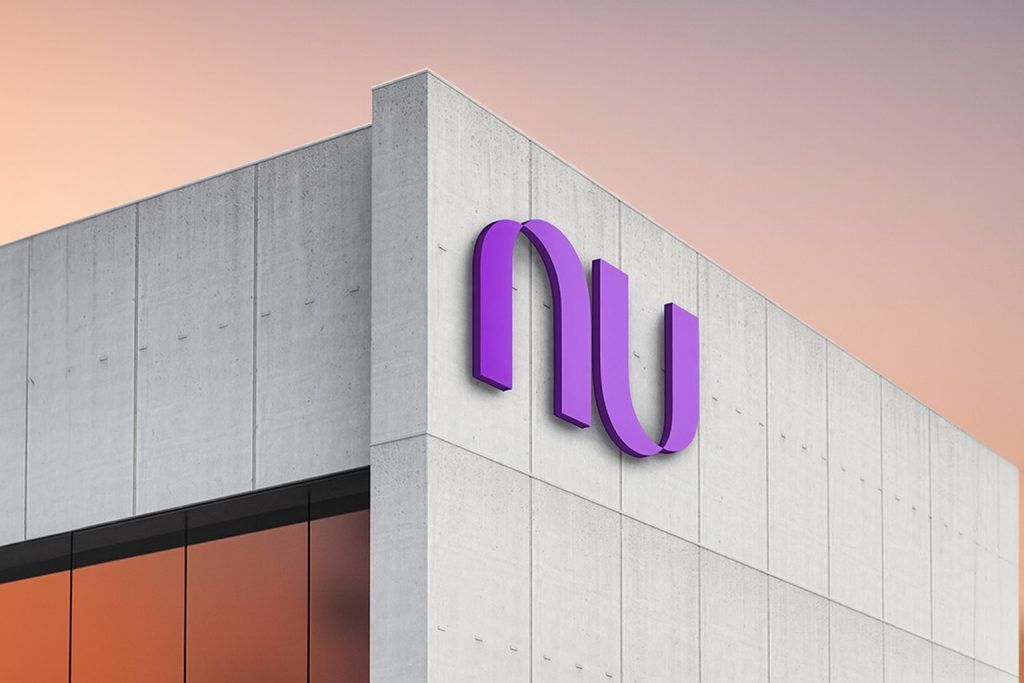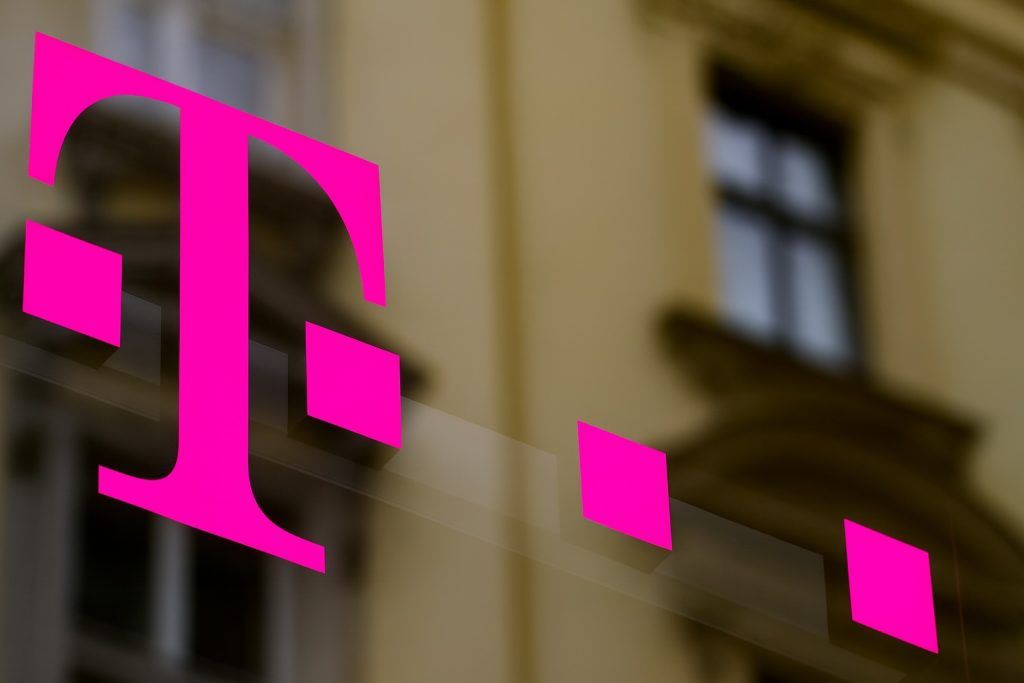- Blowout Q3 Results: Interactive Brokers Group (NASDAQ: IBKR) delivered third-quarter 2025 earnings that surpassed expectations. Net revenues came in at about $1.66 billion (up ~20% year-over-year) with adjusted EPS of $0.57, topping analyst estimates (~$1.52 billion and $0.53 EPS) [1]. Profitability surged – GAAP diluted EPS was $0.59 vs $0.42 a year ago, and pretax profit margins expanded to 79% (from 67% a year prior) [2] [3] – reflecting exceptional operational efficiency.
- Stock Near Highs: IBKR’s stock is trading around the mid-$60s per share as of Oct. 23, 2025, hovering near multi-year highs after a stellar run. Shares closed at $68.52 after the Oct. 16 earnings release [4] and initially jumped about 3% in after-hours trading on the results [5] [6]. The stock has since seen some volatility and profit-taking (closing at $64.77 on Oct. 22 [7]), but remains roughly 50–60% higher year-to-date, dramatically outperforming the broader market. Over the past 12 months IBKR has surged ~83% in value [8] – aided in part by a 4-for-1 stock split in June 2025 that boosted liquidity and investor access [9].
- Major Developments: The brokerage has been buoyed by positive news flow. Interactive Brokers was added to the S&P 500 index in late August 2025 [10], underlining its growing prominence. In mid-October, the company rolled out a new AI-driven feature called “Ask IBKR”, which lets clients query their portfolio in plain English and get instant analytics [11] [12]. “With Ask IBKR, we’re introducing a natural language-based way for investors to interact with their portfolio data,” explained CEO Milan Galik [13], highlighting the firm’s tech-forward approach. The Board also declared a quarterly dividend of $0.08 (payable Dec. 12) to share holders [14] [15] – a sign of confidence in IBKR’s cash generation.
- Trading & Income Surge: 2025’s volatile markets and higher interest rates have played right into IBKR’s strengths. Customer trading activity soared in Q3 – stock trade volumes jumped +67% year-over-year and options trades +27% [16] – driving commission revenues up 23% to $537 million [17]. At the same time, net interest income (the money earned from client balances and margin loans) climbed 21% to $967 million [18], benefiting from elevated interest rates and strong securities lending demand. Notably, customer accounts and assets have exploded: IBKR’s client accounts grew 32% to 4.13 million, and client equity (assets on the platform) jumped 40% year-on-year to a record $757.5 billion [19]. This larger user base – combined with IBKR’s global market access – is generating significantly higher trading volumes and interest revenue, fueling the firm’s robust growth in 2025.
- Bullish Analyst Sentiment: Wall Street remains broadly positive on Interactive Brokers. Most analysts rate IBKR a “Buy,” and the consensus 12-month price target is around $77–$78 per share – roughly 10% above the stock’s pre-earnings levels [20]. In fact, Barclays recently reiterated an Overweight rating and hiked its price target to $81 just ahead of the earnings report [21], citing confidence in IBKR’s growth trajectory. Several other brokers have similar upbeat calls: BMO Capital initiated coverage in October with an Outperform and $82 target [22]. Zacks Investment Research now ranks IBKR a “Strong Buy” as well, after a series of upward earnings estimate revisions – the firm’s consensus EPS forecasts for 2025 and 2026 have been raised by roughly 2–6% over the past month [23] [24]. Analysts highlight Interactive Brokers’ unique position as a tech-savvy global broker benefiting from both trading volatility and interest income, a combination yielding superior earnings growth relative to peers.
- Forward Momentum (and Risks): Looking ahead, experts see more room for upside if current trends hold. With three quarters of 2025 in the books, IBKR is on track for record full-year results – analysts forecast around $6.0–6.1 billion in 2025 revenues (≈11% higher than 2024) and further growth in 2026 [25]. Secular shifts like the rise in retail trading worldwide, growing demand for options and futures, and algorithmic trading are expected to keep volumes healthy. That said, a few caution flags exist: a major decline in interest rates in 2026 could reduce the generous interest spreads IBKR earns [26], and if markets calm down or enter a downturn, trading activity might ebb from 2025’s highs [27]. Competition is also fierce – rivals from Robinhood to Schwab are vying for clients with new features and better rates. For now, though, Interactive Brokers’ diversified global platform and conservative risk management give it an edge. The company’s “fortress” balance sheet (zero debt) and continued investment in technology suggest it’s well-equipped to navigate headwinds while capturing further market share [28] [29].
Stock Price and Recent Performance
Interactive Brokers’ stock has been a standout performer, and it remains in focus after the latest earnings jolt. Shares of IBKR are trading around $65 as of October 23, 2025, not far from their highest levels on record. The stock has experienced some swings in the days surrounding the Q3 report – initially jumping in after-hours trading on the earnings beat, then pulling back slightly on profit-taking – but overall it is up dramatically in 2025, outpacing most of the market. Year-to-date, IBKR has climbed on the order of 50–60%, and over the past 12 months the stock price has nearly doubled (+83% year-on-year) [30]. Even after a 4-for-1 split in June (which quadrupled the share count and quartered the price), Interactive Brokers’ market value has continued to march higher, reflecting investors’ enthusiasm for its growth story.
This strong stock performance has only accelerated in recent months. In late August, Interactive Brokers was added to the S&P 500 index, a milestone that often brings increased attention (and index-fund buying) to a company [31]. Inclusion in the blue-chip index on August 28 was seen as validation of IBKR’s rise from a mid-cap brokerage to a heavyweight in the finance industry. The stock got another big boost from the Q3 earnings release on October 16. Heading into the report, IBKR shares were already near all-time highs around the upper-$60s. When the company announced far-better-than-expected results (more on that below), the stock initially popped about 3% in after-hours trading as upbeat investors reacted to the news [32]. By the next trading day, IBKR settled in the high-$60s per share [33] – slightly off the immediate spike, but still near its peak. Over the subsequent week, the stock drifted modestly lower amid broader market fluctuations and a bit of profit-taking. It closed at $64.77 on Oct. 22 [34], which is roughly 5% below the post-earnings high but still close to multi-year highs. In context, IBKR has dramatically outperformed major indices; for comparison, the S&P 500 is up only ~12% YTD, whereas Interactive Brokers has returned several times that figure thanks to its earnings-fueled rally.
What’s driving this impressive stock run? Analysts point to a confluence of factors: explosive earnings growth, rising interest income, and robust trading activity – all of which have been on display in 2025. Furthermore, IBKR’s shareholder-friendly moves (like the stock split and steady dividends) and inclusion in the S&P 500 have broadened its investor base. Notably, despite the big gains, many experts do not see the stock as wildly overvalued. Interactive Brokers currently trades around 32× forward earnings, which is only a tad higher than its valuation a quarter ago and still below some fintech peers in the brokerage space [35]. In other words, the price appreciation has been backed by real growth in the business. “The consensus price targets in the upper-$70s suggest room for further upside if growth continues as expected,” TS2.tech noted in its market commentary [36] [37]. As long as IBKR keeps executing, bulls argue the stock could have more runway – a sentiment echoed by the generally positive analyst coverage (no major firm recommends selling at the moment [38]).
Of course, after such a steep climb, volatility is natural. IBKR’s shares have seen intra-day swings around news events – for instance, on the earnings day (Oct. 16) the stock actually fell ~1.8% by the close of the regular session, likely as some traders booked profits or reacted to broader market jitters [39]. But that dip was short-lived: in late trading and the following day, the stock rebounded as investors digested the strong results [40] [41]. Overall, the market’s reaction to IBKR’s performance has been clearly positive. The stock’s uptrend in 2025 reflects not just momentum or hype, but the company’s fundamental strength amid favorable conditions. One key tailwind has been the interest rate environment – with U.S. rates at multi-year highs through 2025, brokerages like IBKR can earn significantly more on client cash balances. Another factor is market volatility (from the AI stock boom to geopolitical news) which has kept traders active. Interactive Brokers has capitalized on both trends, translating them into higher earnings, which in turn support a higher share price. As we’ll explore, the latest financial results underscore just how well IBKR is leveraging this environment.
Earnings Beat Fuels Optimism
The catalyst for Interactive Brokers’ recent buzz was its blockbuster Q3 2025 earnings report. Announced on October 16, the results came in well above Wall Street’s expectations, confirming that the brokerage’s growth streak is still in full swing. Net revenues for Q3 were $1.655 billion (or $1.61 billion on an adjusted basis), which represents a ~18–20% increase from the same quarter last year [42]. This handily beat analyst consensus estimates that were in the $1.4–1.5 billion range for the quarter. Likewise, profitability surprised to the upside: IBKR reported diluted earnings per share of $0.59 (GAAP), or $0.57 on an adjusted basis, whereas analysts had been looking for roughly $0.53 [43]. In percentage terms, earnings per share jumped about 35% year-over-year (adjusted EPS was $0.40 in Q3 2024 [44]), showcasing the company’s accelerating profit engine. Interactive Brokers’ pretax profit margin expanded to an impressive 79% this quarter [45], up from 67% a year ago – a clear indicator of improved operating leverage and cost control.
Drilling down, multiple business lines hit record levels. The brokerage’s revenue is broadly split between commissions (fees from client trades) and net interest income (earnings on client cash and margin loans), and both areas saw strong growth:
- Trading boom:Commission revenues jumped +23% year-over-year to $537 million [46]. This was driven by a huge increase in customer trading activity. In Q3, stock trading volume on IBKR’s platforms soared 67% compared to the prior year’s quarter, and options trading volume rose 27% [47]. (There was a small dip in futures trading volume, down 7%, but stocks and options dominate the mix.) These numbers underscore how 2025’s market excitement – from the tech sector’s AI rally to active IPO and crypto markets – has translated into more trades by IBKR clients. More trades mean more commission fees for Interactive Brokers, especially since it caters to frequent traders. Notably, the company’s DARTs (daily average revenue trades) hit 3.62 million in Q3, up 34% from a year ago [48]. Even as the client base grows, IBKR is managing to keep many of those new customers actively trading.
- Interest windfall: Interactive Brokers also significantly benefited from the high interest rate climate. Net interest income was $967 million for the quarter [49] – up 21% year-over-year – reflecting fatter margins on customer cash balances and margin lending. In essence, because the Federal Reserve’s benchmark rates have been elevated, brokers like IBKR can earn more on the cash sitting in customer accounts or the money they lend to clients for trading on margin. IBKR has seen customer credit balances (uninvested cash) swell to $154.8 billion (+33% YoY) and customer margin loan balances rise to $77.3 billion (+39% YoY) [50]. Those larger balances, combined with higher interest yields, translated into a substantial jump in interest revenue this quarter. It’s worth pointing out that IBKR actively manages its interest exposure – for example, by lending out stocks in its customers’ accounts (securities lending) and through a unique strategy of holding its equity capital in a basket of global currencies to mitigate dollar risks [51]. In Q3, securities lending was especially strong, and the company noted that certain regulatory changes (like the SEC eliminating some transaction fees) reduced costs and helped margins as well [52].
On the expense side, Interactive Brokers showed discipline and one-off benefits. Operating expenses were essentially flat or down in many areas. In fact, general and administrative costs plunged 59% from last year [53], mainly because the year-ago quarter included $100 million in one-time charges (legal/regulatory matters and a European subsidiary consolidation) that did not recur [54]. Excluding those, IBKR’s expense base is growing modestly – the company did increase marketing spending by about $10 million in Q3 to spur growth [55], and its execution and clearing fees dropped due to a regulatory fee cut (SEC fees removed in 2025) which actually boosted net revenue by tens of millions [56]. The bottom line is that IBKR’s operating margins are expanding as revenue growth far outpaces expense growth, a trend shareholders love to see.
Executives struck an upbeat tone on the earnings call (held Oct. 16). While IBKR does not provide official forward guidance, the management highlighted the broad-based nature of the growth. There’s no single client segment or product responsible – rather, “no single segment is driving the growth – it’s broad-based across trading and interest income,” as one market observer noted [57]. This suggests a balanced and resilient business model. The CEO, Milan Galik, and founder-chairman Thomas Peterffy (a legend in electronic trading) emphasized that IBKR’s decades-long focus on automation and technology is paying off in the form of loyal clients and high trading volumes [58]. They also pointed to IBKR’s continually expanding product offerings – from stocks and options to futures, forex, bonds, and even cryptocurrencies – as a factor that keeps customers engaged and attracts new ones [59]. In short, the earnings confirm that Interactive Brokers is firing on all cylinders, leveraging both external market conditions and internal innovations.
The Q3 report didn’t just impress on paper; it also reassured investors about IBKR’s trajectory. The company’s client metrics are soaring in tandem with financial performance. In addition to the trading and asset figures noted, IBKR’s customer account growth (+32%) means it is bringing in thousands of new users every week – a sign of successful acquisition, possibly aided by word-of-mouth and its reputation among serious traders. Client equity up 40% to $757.5 billion [60] means existing customers are entrusting more assets to the platform (or higher market valuations of those assets). Either way, it underlines Interactive Brokers’ status as a major custodian of investor wealth globally. The firm’s total equity capital is $19.5 billion [61] (with zero long-term debt), giving it a strong buffer for growth and stability. Also, IBKR’s Board approving another $0.08 quarterly dividend (to be paid in December) [62] signals confidence – they’ve kept this dividend steady, and while small (yield <0.5%), it’s a gesture that the company is comfortably profitable and returning some cash to shareholders.
Market reaction to these earnings has been largely positive, as discussed. One might wonder: why didn’t the stock explode even higher on such great numbers? It’s likely because IBKR’s stock had already run up into the earnings (pricing in some of the good news), and the broader market in mid-October had bouts of volatility. In fact, IBKR shares briefly dipped on the earnings day despite the beat, which some analysts chalked up to short-term traders taking profits or general market nervousness [63] [64]. But that dip was temporary – the strong fundamentals ultimately shone through, and IBKR remains near its highs.
Looking ahead, the Q3 beat sets a high bar for Q4 and beyond. Investors will be watching if Interactive Brokers can maintain this pace. Notably, Q4 2024 was an especially active quarter (due to events like late-year volatility), so the year-over-year comparisons might be tougher next quarter. Nonetheless, consensus forecasts see IBKR continuing to grow earnings into 2026 [65]. As we’ll discuss in the Outlook section, there are some external factors (like interest rates) that could change the equation next year. But for now, Interactive Brokers has demonstrated remarkable momentum, validating those who considered it an underappreciated player in the fintech space.
New Products and Strategic Moves
Interactive Brokers’ success is not only about benefiting from external trends – the company has also been actively innovating and expanding its offerings. In 2025, IBKR rolled out several initiatives to sharpen its competitive edge and broaden its appeal to different types of investors. Two developments in particular have caught attention:
- AI-Powered “Ask IBKR” Tool: Just a day before its earnings release, Interactive Brokers announced the launch of Ask IBKR, an AI-driven tool that allows clients to get instant answers about their portfolio by simply typing natural-language questions [66]. For example, a user can ask, “What sector am I underweight compared to the S&P 500?” and the system will quickly analyze their portfolio and deliver an answer [67]. This is essentially a chatbot extension of IBKR’s PortfolioAnalyst service, leveraging generative AI to make advanced analytics more user-friendly. CEO Milan Galik described the feature as “a natural language-based way for investors to interact with their portfolio data”, saving clients the hassle of navigating through multiple screens [68]. The Ask IBKR tool can handle queries about performance vs benchmarks, asset allocation, geographic exposure, dividend income, trading history, and more [69] – with plans to expand into fundamentals, statements, and other data. Importantly, IBKR has built this AI tool with proprietary safeguards to avoid the pitfalls of generic AI chatbots (like erroneous answers). The introduction of Ask IBKR highlights how Interactive Brokers is embracing cutting-edge technology to enhance user experience. It’s a trend across finance to integrate AI, and IBKR is positioning itself at the forefront among brokerages in this regard [70]. Analysts see this as a smart move to make IBKR’s rich feature set more accessible, especially as the platform is known for its depth (which can be daunting for newcomers). The move also signals that IBKR is not resting on its laurels – it’s investing in tools that can attract and retain clients who appreciate sophisticated analytics delivered in a modern way.
- 24/7 Global Trading & Market Access: Another strategic focus for Interactive Brokers has been to leverage its international reach. The company now offers around-the-clock trading on 10,000+ securities – including overnight trading hours for many U.S. stocks – something few brokers provide [71]. This 24/7 trading initiative means that an investor in Asia or Europe, for instance, can trade U.S. equities during their daytime (which is nighttime in New York) through IBKR’s platform. It also allows any client to react to news in off-hours (say, a big tech earnings report after the usual market close) by trading immediately instead of waiting for the next day. This “global trading day” concept is an innovation IBKR has championed, reflecting its presence in over 160 markets across 36 countries [72]. In fact, over 80% of IBKR’s accounts are held by clients outside the U.S. [73] – a testament to its worldwide appeal. By catering to an international clientele and offering unique features like overnight trading, IBKR differentiates itself from more U.S.-centric rivals. As one market strategist noted, “Interactive Brokers is basically the global standard for serious traders,” thanks in part to such capabilities [74]. The strategist added that IBKR’s ultra-low margin lending rates and superior trade execution technology “attract a more sophisticated crowd,” which leads to high trading volumes and large account balances on the platform [75].
- Product Breadth and “Quiet Giant” Strategy: Unlike some newer brokerages that focus on commission-free stock trading via sleek mobile apps, Interactive Brokers has long pursued a model of offering everything under one roof – and doing so at very competitive costs. Clients can trade stocks, options, futures, forex, bonds, and even cryptocurrencies (for certain institutional clients and via regulated channels) all from their IBKR account. The platform supports advanced order types, algorithmic trading, margin lending, and direct market access that professional traders and institutions often demand [76]. This breadth and sophistication have carved out a lucrative niche for IBKR: it attracts active traders, hedge funds, prop trading firms, financial advisors, and global investors who need more than just a basic app. While this approach doesn’t always generate the flashy headlines of a Robinhood, it has proven effective. Some market commentators dub IBKR the “quiet giant” of online brokerage – steadily growing its base and profits without as much fanfare [77]. After the Q3 results, Financhle (a financial blog) lauded Interactive Brokers’ quarter as “a masterclass in how a brokerage can thrive amid volatile markets,” calling the company “the quiet giant that’s been bulking up while others chase flashy trends.” [78] This is a reference to competitors like Robinhood, which gained notoriety for commission-free trading and a huge surge of novice traders during 2020–2021. Robinhood’s user growth and stock price have been more erratic – indeed, Robinhood (HOOD) shares skyrocketed over 200% in 2025 amid a retail trading boom and its inclusion in the S&P 500, but also saw significant volatility and regulatory scrutiny [79]. (HOOD even plunged 9% in one day on Oct. 10 after a streak of gains [80], and it has faced fines for outages and compliance issues [81].) In contrast, Interactive Brokers has grown more quietly and consistently, focusing on automation, global diversification, and reliability. IBKR has avoided major platform outages and navigated regulatory challenges more conservatively (its last big fine was an AML penalty in 2020, now well in the past). In Q3, IBKR even benefited from regulatory changes – the SEC’s elimination of certain transaction fees saved the company tens of millions in expenses [82]. All told, IBKR’s approach of steady innovation (fractional shares, global trading, AI tools, etc.) and low-cost, high-tech offerings has made it an industry stalwart. As TS2.tech noted, Interactive Brokers’ highly automated, low-cost platform with global reach positions it as a core player that could “anchor a 2026 rally” for investors looking for exposure to the brokerage sector [83].
- Continued Expansion: Interactive Brokers hasn’t stopped expanding geographically either. Earlier in 2025, the company launched a new entity in Ireland and expanded its presence in the Middle East [84], part of a push to capture more international clients. It’s also been targeting specific segments – for example, offering fractional shares of international stocks, which is fairly unique and appeals to investors who want global diversification even with smaller amounts of money [85]. Another area IBKR is exploring is higher-yield offerings to stay competitive for client cash: some rivals (like Robinhood) have been advertising high-yield cash sweep programs to attract assets, so IBKR will want to ensure it continues to pay attractive interest on idle cash to retain customers. The Q3 report showed IBKR is indeed upping its marketing spend (an extra $10 million on advertising in Q3) [86], signaling the firm’s intent to capture even more market share. This could manifest in promotions or new products aimed at demographics like younger traders or Registered Investment Advisors who manage client money. With its financial strength and profitability, IBKR has plenty of room to invest in such growth initiatives.
In summary, Interactive Brokers is not resting on its laurels – the firm is actively enhancing its platform and extending its reach. This combination of internally-driven innovation (AI tools, 24/7 trading, broader assets) and favorable externally-driven trends (volatile markets, higher rates, new index inclusion) has created a potent mix for the company in 2025. It’s increasingly clear that IBKR’s strategy differs from many competitors: rather than racing to zero commissions at all costs or splurging on flashy marketing, IBKR has focused on building a comprehensive, technology-driven ecosystem for serious investors worldwide. As the recent developments show, it is willing to adopt new tech (like AI) and adjust to industry shifts to keep that edge. For investors in IBKR stock, these moves are generally seen as positives, reinforcing the view that the company is forward-looking and committed to maintaining leadership in the brokerage arena.
Analyst and Expert Commentary
The stellar results and strong stock performance of Interactive Brokers have prompted a wave of commentary from financial analysts and market experts. The consensus: IBKR is a top pick in the brokerage sector right now, thanks to its robust growth and unique positioning. Here are some of the key perspectives:
- Wall Street Upgrades: In the days around the earnings release, analysts rushed to reiterate or raise their targets for IBKR. Barclays analyst Benjamin Budish boosted his price target from $73 to $81 (with an Overweight rating) on October 8, just ahead of earnings [87]. He cited confidence in Interactive Brokers’ accelerating growth trajectory and its leverage to higher interest rates. Around the same time, BMO Capital’s Brennan Hawken initiated coverage with an Outperform rating and an $82 target [88], signaling bullish expectations. The median 12-month price target among Wall Street is now approximately $77.50 [89] per share, implying there is further upside ahead. Notably, virtually no major analysts are advising to sell IBKR at present [90] – even those without outright Buy ratings are neutral at worst, reflecting a broad optimism. As mentioned, Zacks Investment Research also gave IBKR its highest Zacks Rank #1 (Strong Buy), after seeing upward revisions in earnings estimates and what it views as attractive growth prospects [91] [92]. This favorable analyst stance provides a level of validation: the people who study the company most closely generally agree that Interactive Brokers’ stock has more room to run.
- “Quiet Giant” Praised: Market commentators have taken note of IBKR’s somewhat under-the-radar dominance. Miles Torrington, a contributor at Financhle, described Interactive Brokers as “the quiet giant that’s been bulking up while others chase flashy trends.” [93] He called IBKR’s Q3 performance “a masterclass in how a brokerage can thrive amid volatile markets.” The gist of this comment is that while competitors might get more headlines (whether it’s Robinhood with meme stocks or traditional banks making big acquisitions), IBKR has methodically grown its business in the background – and now it’s reaping the rewards. Many experts appreciate IBKR’s steady approach. Unlike some app-based brokerages that entice users with gimmicks or risky features, Interactive Brokers has focused on core strengths: offering a reliable platform, ultra-fast execution, a wide range of assets, and low costs. This has earned it a loyal following of sophisticated traders. As a result, IBKR is now one of the largest electronic brokers globally by number of trades and client equity – a stature it reached without heavy splash in the retail media. “Interactive Brokers is basically the global standard for serious traders,” one strategist noted [94], pointing out that IBKR’s reputation among professionals and international investors is second to none. The strategist emphasized IBKR’s low margin rates and superior trade executions as key factors that “attract a more sophisticated crowd”, which in turn leads to high volumes and asset balances on the platform [95]. In an era where many fintech firms are trying to gamify or simplify trading, IBKR has shown that catering to knowledgeable investors can be extremely lucrative.
- Investor Sentiment: On online investor forums and social media, sentiment toward IBKR stock turned decidedly bullish after the earnings beat. Monitoring of postings on platforms like Reddit and Twitter suggests many retail investors view IBKR as a solid long-term play on the growth of investing globally. Some point out that IBKR’s inclusion in the S&P 500 (and Robinhood’s, as well) signifies a sort of “coming of age” for electronic brokerages – they are now core parts of the financial system, not fringe upstarts. Data from Investing.com showed that in the 90 days prior to the earnings, there were 8 upward EPS revisions and 0 downward for IBKR [96], indicating analysts were increasingly optimistic heading into the report. The Q3 results likely reinforced that trend. GuruFocus reports that analyst recommendations for IBKR remain “generally positive,” with an average price target in the mid-to-upper $70s and a consensus Buy rating [97]. Technical traders have noted that IBKR recently hit a 52-week high and has been riding strong momentum. While some caution that the stock’s valuation multiples have expanded (price-to-earnings is higher now given the price run-up) [98], many analysts argue the premium is justified by IBKR’s growth rate and earnings quality. One financial blogger summed up the bullish case succinctly: “If the company keeps executing like this, we’ll continue to see upside.” [99] He also highlighted IBKR’s “fortress” balance sheet – the company has zero long-term debt and a high return on equity – as support for a higher share price long-term [100]. In other words, IBKR has both momentum and fundamental strength, a combination that investors love.
- Comparisons to Peers: Industry analysts often compare Interactive Brokers to its peers to contextualize its performance. Charles Schwab (SCHW), a more retail-focused brokerage giant, also posted strong Q3 results days before IBKR, citing “favorable macroeconomic tailwinds” and record revenues [101]. Schwab’s success in 2025 (its stock jumped on earnings as well [102]) shows that many brokerage firms are thriving in the current environment of high rates and active investors. Morgan Stanley, which owns ETrade, reported double-digit growth in its wealth management fees in Q3 [103], again reflecting a boom time for investment services. And as mentioned, Robinhood Markets had a huge stock rally this year (up ~200% YTD) as it recovered from 2022 lows and even got added to the S&P 500, though it remains more volatile and still below its IPO price. The fact that multiple brokerage firms are doing well suggests an industry-wide trend: more people globally are trading and investing, and market volatility (plus higher yields on cash) is boosting the sector’s earnings. Within that rising tide, IBKR is often seen as particularly well-positioned because of its global, diversified model. Unlike a Schwab, IBKR has a bigger international footprint and more of its revenue from commissions; unlike a Robinhood, IBKR has a profitable, established business with a wider product suite and institutional clients. This nuance isn’t lost on experts. As one observer put it, “IBKR’s model is highly effective – it manages to grow rapidly and profitably,” combining the best of fintech innovation with prudent risk management [104]. There is a sense that IBKR could continue to take market share from both traditional brokers (by offering better tech and pricing) and newer apps (by offering more products and global access).
- Risks & Critiques: Despite the overwhelming positivity, a few analysts inject notes of caution. Bears (the few who are out there on IBKR) argue that if markets enter a prolonged calm or downturn, trading volumes could fall and weigh on IBKR’s growth [105] [106]. For instance, 2025 saw plenty of volatility (the AI stock boom, Fed rate moves, geopolitical events); if 2026 were unusually quiet or if a recession hit, investors might trade less, hurting commission revenue. Additionally, if interest rates were to decline sharply, the generous interest income IBKR earns could shrink – a key vulnerability given how much of 2025’s profit has been tied to high rates [107]. Some also note that competition is fierce: other brokers are not standing still. If rivals decide to up the ante – say, by raising the interest they pay on cash balances, cutting trading fees further, or launching new features – IBKR might feel pressure to respond, which could impact margins. A recent example is Robinhood’s push into offering high-yield savings and retirement accounts, targeting younger customers that IBKR would like to attract as well. However, when weighing these risks, many analysts conclude that IBKR’s advantages outweigh them for now. The company’s global diversification means it can find growth in different markets (for example, if U.S. trading slowed, maybe Asian or European clients would pick up slack). Its client base being more professional means they’re less likely to completely disengage from markets even during lulls. And IBKR’s conservative management of risks – e.g., it has strict margin requirements and monitors client leverage closely – could even be a strength if a downturn comes, since it has historically had extremely low loan losses and “bad debt” even in crises [108]. Indeed, IBKR noted that in Q3 it actually had a net recovery of $2 million in bad debts (i.e. it collected on accounts that had previously defaulted) [109], a sign that its credit exposure is very well-managed. So, while cautionary scenarios exist, the general expert view is that Interactive Brokers has a solid lead and cushion in the online brokerage race, and any headwinds (rate cuts, quieter markets) would likely only modestly slow its momentum rather than derail it.
Outlook and Stock Forecast
After a year of standout performance, what’s next for Interactive Brokers? Most indicators suggest the company is positioned to keep growing into 2026, though perhaps not without facing new challenges. Here’s a summary of the forward-looking analysis and predictions based on current trends and expert opinions:
- Continued Growth Trajectory: With three strong quarters now reported in 2025, IBKR’s year-to-date revenues are up roughly 20% and pretax profits up even more on a year-over-year basis [110]. Barring an unforeseen slowdown in Q4, Interactive Brokers is on pace to notch record-high revenues and earnings for full-year 2025. Wall Street analysts currently project around $6.0–6.1 billion in revenue for 2025 [111], which would be about 11–12% higher than 2024’s total. They also expect further earnings gains in 2026. Many experts believe that secular tailwinds will persist: the rise of algorithmic and AI-assisted trading, the growing participation of retail investors worldwide, and heightened interest in options and derivatives as investment tools could all keep trading volumes elevated [112]. Furthermore, IBKR’s expanding client base (now over 4 million accounts and growing ~30% annually) means that even if trading activity per account normalizes or dips, the sheer increase in number of customers can drive overall volume higher [113]. In essence, IBKR has significantly widened its funnel of potential activity – each new account is a future source of trades, margin loans, and assets under custody.
- Interest Rate Wildcard: A key question mark for 2026 is the interest rate outlook. Interactive Brokers has been a big beneficiary of the high short-term interest rates throughout 2025, as discussed. If the U.S. Federal Reserve (or other central banks in IBKR’s markets) start cutting rates next year, it could compress IBKR’s net interest margins and slow that lucrative income stream [114]. Even during Q3, there were hints of this: IBKR’s net interest margin ticked down slightly from Q2, as yields on certain assets (like segregated client cash) came off peak levels [115]. Management has indicated they can’t control macro rates, but they do have some levers to pull – such as attracting more client cash (higher balances can offset some margin compression) and optimizing their global currency strategy to eke out extra yield [116]. If rates decline only gradually, the impact on IBKR’s earnings might be modest; the firm could partly compensate with volume growth or cost tweaks. However, in a scenario where rates drop sharply (for instance, if a recession forces aggressive Fed cuts), IBKR’s interest-related income could fall noticeably, posing a headwind to profit growth [117]. This is something analysts are watching closely. Some are already dialing in slightly lower net interest income for 2026 in their models, anticipating at least a couple of Fed rate cuts. The flip side is that lower rates could stimulate more trading in certain markets (e.g. if rate cuts boost stocks, that can fuel trading activity), so it’s a mixed bag. Overall, expect IBKR’s management to remain nimble in managing interest exposure, as they’ve done for years with their “GLOBAL” currency basket and by adjusting the interest they pay to clients on idle cash to maintain competitiveness [118].
- Market Activity & Investor Engagement: Another factor is the overall market environment. 2025 has been unusually favorable for brokerages – a “golden moment” as some call it [119] – with persistent volatility and generally rising asset prices (especially in tech). If 2026 sees a calmer market or a bear market, trading volumes could taper off. For example, if the frenzied retail options trading in tech stocks cools down, IBKR’s commission growth might slow. That said, many believe that we’re in a new era of investor engagement: the lessons of the past few years (meme stocks, crypto, the pandemic trading boom) have brought millions of new investors into the markets for the long haul. These investors may not disappear even if things calm down; they might trade less often, but they are unlikely to all exit. Moreover, IBKR’s diverse product set can shine in different conditions – if stocks stagnate, perhaps forex or commodities trading picks up, or investors shift to options/futures to hedge, all of which IBKR offers [120]. And if a downturn hits, IBKR’s strong risk controls mean it’s less likely to suffer losses from client defaults (the firm is known for quickly liquidating risky positions and maintaining conservative margin requirements). In a severe recession scenario, IBKR might see slower account growth and maybe a dip in trading, but it also might gain relative advantage if weaker competitors falter. Indeed, IBKR has historically gained market share during tumultuous times by being a safe and reliable platform. As one analyst noted, the company’s fortress balance sheet and prudent risk management could prove “advantageous if a downturn comes,” as IBKR can weather the storm and even attract customers from brokers that run into trouble [121]. During the 2008–2009 crisis and the 2020 pandemic crash, for instance, IBKR came through solidly while some others needed bailouts or suffered outages. So, while a market hibernation is a risk to watch, IBKR is relatively well-prepared for it.
- Competitive Landscape: Interactive Brokers will need to continue innovating because its rivals surely will. The competitive pressures span from fintech upstarts to industry behemoths. Robinhood, as mentioned, is pushing into areas like higher-yield savings, crypto wallets, and even branching toward advisory services – all geared toward keeping its primarily younger clientele engaged and expanding beyond just trading. Traditional firms like Schwab, Fidelity, and ETrade are pouring resources into their trading platforms to narrow the tech gap with IBKR. There’s also global competition (regional brokers in Europe and Asia catering to local investors). To stay ahead, IBKR is expected to roll out more features. We’ve seen the AI tool launch and crypto trading offerings for institutions. Analysts think IBKR might introduce more enhancements, possibly around trading recommendations or advanced analytics, given its tech DNA [122]. The company’s recent hiring and spending patterns (e.g. increased marketing and technology budget) hint at upcoming promotions or products aimed at capturing new segments [123] [124]. One area to watch is whether IBKR will do more on the retail investor education/user-experience front – historically its platform, Trader Workstation, has been powerful but complex, so simpler mobile app improvements or educational tools could help attract less experienced investors without alienating the pros. Another area is M&A: While IBKR has not been an aggressive acquirer (unlike Schwab which bought TD Ameritrade, etc.), its strong financial position means if an opportunity arose (say, buying a smaller broker in a new market or a fintech platform), it could consider it. For now, IBKR seems focused on organic growth. Experts believe that as long as IBKR keeps its technology edge and low-cost focus, it will continue drawing clients. Its advantage is partly structural – IBKR’s automation and efficiency allow it to offer low commissions and good interest on cash while still making money, a combination that is hard for some competitors to match unless they invest heavily in tech themselves. Barclays’ analyst recently noted that IBKR’s technology-driven model gives it a cost advantage it can pass on to customers, which is a key reason he remains bullish on the stock [125]. The Q3 report actually showed IBKR increasing advertising spend to capitalize on this moment – a sign it’s intent on widening its lead.
- Stock Forecasts: Putting it together, most analysts forecast IBKR’s earnings will continue to grow in 2026, albeit at a possibly moderate pace if interest income plateaus. Revenue growth might normalize to high-single or low-double digits percentage-wise, according to consensus. The current average price target around $77–$78 suggests modest upside from the mid-$60s level [126]. However, some of the more bullish analysts (like at Barclays, BMO) see the stock in the $80s within a year [127], which would imply ~20-25% upside. These targets could move higher if IBKR delivers another earnings beat in Q4 or if market conditions remain very favorable. It’s worth noting that IBKR’s stock, even after this year’s surge, still trades at a reasonable valuation relative to its growth (PEG ratio, etc., are not extreme). That leaves room for the stock to rise if earnings climb as projected. Investor’s Business Daily recently highlighted brokerage stocks as beneficiaries of the current cycle, and IBKR in particular as having one of the strongest share buyback programs and long-term returns among financials (IBKR shares have risen over 600% since its 2007 IPO, even more if you include buybacks and dividends) [128]. As always, short-term stock movements may fluctuate, but many market participants see IBKR as a core holding for exposure to the fintech/brokerage space. In the words of TS2.tech’s market commentary, the stage appears to be set for brokers like Interactive Brokers to lead in the next market rally [129], given their central role in enabling the investing boom.
In conclusion, Interactive Brokers Group enters late 2025 as a clear winner in its industry. The Q3 earnings were a resounding affirmation of its strategy – combining technology, global reach, and financial savvy to capitalize on market trends. With its stock near highs and the company firing on all cylinders, IBKR has firmly caught the attention of both Wall Street and Main Street. There are certainly risks on the horizon (interest rate shifts, competitive battles, and market cycles), but Interactive Brokers has demonstrated resilience and adaptability over decades. Its management, known for caution, is nevertheless investing confidently in new tech and growth initiatives, indicating they believe the current momentum is sustainable [130]. For investors, IBKR represents a play on the continued democratization and digitization of trading worldwide – themes that have only accelerated in recent years. If the company can maintain its pace of customer and profit expansion, Interactive Brokers’ stock may well continue to be a top pick in the financial sector, riding the wave of increasing global market participation.
Sources: Recent financial results from Interactive Brokers’ Q3 2025 earnings release [131] [132]; commentary and analysis from TS2.tech [133] [134]; additional insights from Business Wire, Financhle, and Benzinga [135] [136]; stock performance data from Investing.com [137] and S&P Dow Jones Indices [138]; analyst sentiment from TradingView and Zacks [139] [140]; executive quote from IBKR’s press release [141]. All information is up to date as of October 23, 2025.
References
1. ts2.tech, 2. ts2.tech, 3. www.businesswire.com, 4. ts2.tech, 5. ts2.tech, 6. ts2.tech, 7. www.investing.com, 8. ts2.tech, 9. ts2.tech, 10. press.spglobal.com, 11. investors.interactivebrokers.com, 12. investors.interactivebrokers.com, 13. investors.interactivebrokers.com, 14. ts2.tech, 15. www.businesswire.com, 16. ts2.tech, 17. ts2.tech, 18. ts2.tech, 19. ts2.tech, 20. ts2.tech, 21. ts2.tech, 22. ts2.tech, 23. finviz.com, 24. finviz.com, 25. ts2.tech, 26. ts2.tech, 27. ts2.tech, 28. ts2.tech, 29. ts2.tech, 30. ts2.tech, 31. press.spglobal.com, 32. ts2.tech, 33. ts2.tech, 34. www.investing.com, 35. ts2.tech, 36. ts2.tech, 37. ts2.tech, 38. ts2.tech, 39. ts2.tech, 40. ts2.tech, 41. ts2.tech, 42. www.businesswire.com, 43. ts2.tech, 44. www.businesswire.com, 45. www.businesswire.com, 46. www.businesswire.com, 47. www.businesswire.com, 48. www.businesswire.com, 49. www.businesswire.com, 50. www.businesswire.com, 51. ts2.tech, 52. www.businesswire.com, 53. www.businesswire.com, 54. www.businesswire.com, 55. www.businesswire.com, 56. www.businesswire.com, 57. ts2.tech, 58. ts2.tech, 59. ts2.tech, 60. ts2.tech, 61. www.businesswire.com, 62. www.businesswire.com, 63. ts2.tech, 64. ts2.tech, 65. ts2.tech, 66. investors.interactivebrokers.com, 67. investors.interactivebrokers.com, 68. investors.interactivebrokers.com, 69. investors.interactivebrokers.com, 70. ts2.tech, 71. ts2.tech, 72. ts2.tech, 73. ts2.tech, 74. ts2.tech, 75. ts2.tech, 76. ts2.tech, 77. ts2.tech, 78. ts2.tech, 79. ts2.tech, 80. ts2.tech, 81. ts2.tech, 82. ts2.tech, 83. ts2.tech, 84. ts2.tech, 85. ts2.tech, 86. ts2.tech, 87. ts2.tech, 88. www.benzinga.com, 89. ts2.tech, 90. ts2.tech, 91. finviz.com, 92. finviz.com, 93. ts2.tech, 94. ts2.tech, 95. ts2.tech, 96. ts2.tech, 97. ts2.tech, 98. ts2.tech, 99. ts2.tech, 100. ts2.tech, 101. ts2.tech, 102. ts2.tech, 103. ts2.tech, 104. ts2.tech, 105. ts2.tech, 106. ts2.tech, 107. ts2.tech, 108. ts2.tech, 109. ts2.tech, 110. ts2.tech, 111. ts2.tech, 112. ts2.tech, 113. ts2.tech, 114. ts2.tech, 115. ts2.tech, 116. ts2.tech, 117. ts2.tech, 118. ts2.tech, 119. ts2.tech, 120. ts2.tech, 121. ts2.tech, 122. ts2.tech, 123. ts2.tech, 124. ts2.tech, 125. ts2.tech, 126. ts2.tech, 127. ts2.tech, 128. finviz.com, 129. ts2.tech, 130. ts2.tech, 131. www.businesswire.com, 132. www.businesswire.com, 133. ts2.tech, 134. ts2.tech, 135. investors.interactivebrokers.com, 136. ts2.tech, 137. www.investing.com, 138. press.spglobal.com, 139. ts2.tech, 140. finviz.com, 141. investors.interactivebrokers.com
